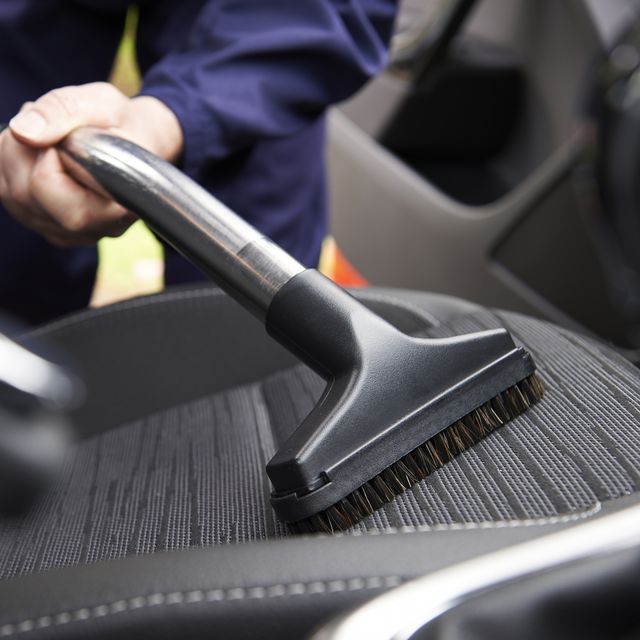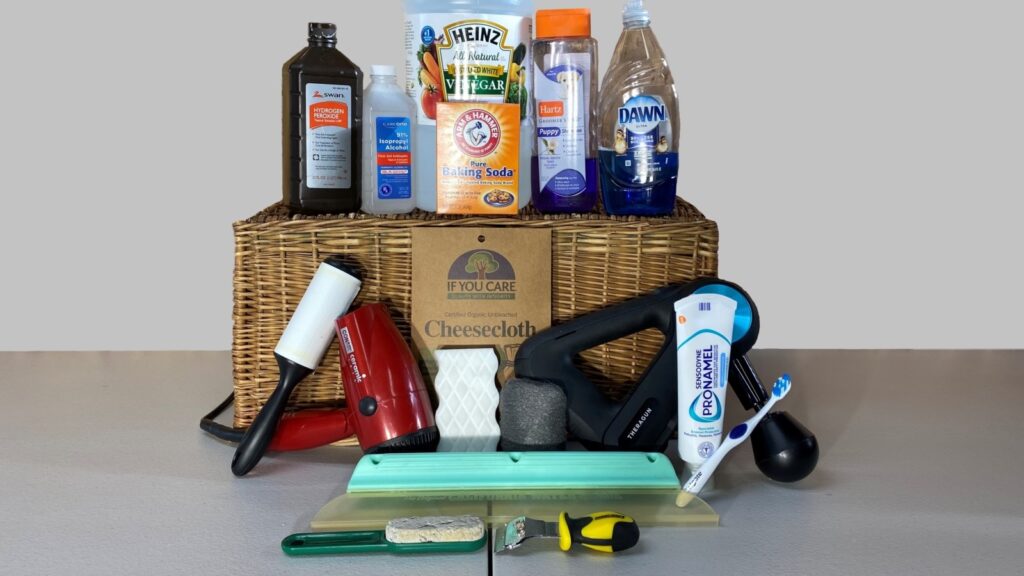- Jeep Cherokee Push Button Start Not Working: Troubleshooting Tips To Get You Back on the Road Fast! - 11 November 2023
- Haval H2 Problems: The Complete Troubleshooting Guide - 11 November 2023
- Gwm P Series Problems: Troubleshooting Guide for Common Issues - 11 November 2023
To remove dried paint from car interior, use a mild solvent like rubbing alcohol or nail polish remover. Gently dab the affected area with a cloth soaked in the solvent, and continue until the paint is fully removed.
Removing dried paint from the interior of your car can be a daunting task. Accidents happen, and sometimes paint spills or splatters onto the seats, dashboard, or other surfaces. If left untreated, dried paint can be difficult to remove and may cause damage to the car’s interior.
Fortunately, with the right approach and supplies, you can successfully remove dried paint from your car’s interior without causing any harm. We’ll explore effective methods and tips for removing dried paint from your car’s interior, allowing you to restore its pristine condition.
Assess The Paint Stains
One of the most frustrating things for any car owner is finding dried paint stains on the interior surfaces. Whether it’s from a home improvement project, graffiti, or accidental spills, removing dried paint from your car interior requires careful assessment and the right techniques. In this article, we will guide you through the process of assessing the paint stains on your car interior, identifying the affected areas, determining the type and thickness of the paint, and inspecting for any damage to the car interior.
Identify The Affected Areas
Before you begin removing dried paint from your car interior, you need to identify the areas that have been affected. Take a close look at all the surfaces inside your car, including the seats, doors, dashboard, and any other areas where paint stains may be present. Make a mental note as you visually inspect each area in order to prioritize your cleaning efforts.
Determine The Type And Thickness Of The Paint
Knowing the type and thickness of the dried paint stains on your car interior is crucial in selecting the appropriate removal method. There are different types of paint, such as water-based paint, oil-based paint, enamel, or spray paint, and each may require a different approach. Additionally, the thickness of the paint can affect the difficulty of removal. In order to determine the type and thickness of the paint, you can use the following methods:
- Scraping: Gently scrape the dried paint with a plastic scraper or your fingernail to assess its texture and thickness. Be careful not to damage the surface underneath.
- Acetone test: Apply a small amount of acetone on an inconspicuous area of the paint stain and observe if it reacts. Acetone will dissolve certain types of paint, but it may also damage certain surfaces, so proceed with caution.
- Paint identification kit: If you are unsure about the type of paint, you can use a paint identification kit that includes solvents and testing swabs to determine the paint type. Follow the instructions provided with the kit for accurate results.
Inspect For Any Damage To The Car Interior
While assessing the paint stains, it is important to inspect for any damage to the car interior. Dried paint stains can sometimes cause scratches, discoloration, or other types of damage to the surfaces. Carefully examine the affected areas and check for any signs of wear and tear. If you notice any damage, take note of it and consider repairing it after removing the paint stains.
Gather Necessary Tools And Materials
When it comes to removing dried paint from your car’s interior, having the right tools and materials is crucial. Not only will this make the process easier and more efficient, but it will also help protect the surfaces of your car. In this section, we will discuss the recommended tools for paint removal, the safety equipment you need to protect yourself, and the cleaning agents suitable for your car interior.
Recommended Tools For Paint Removal
In order to effectively remove dried paint from your car’s interior, you will need a few essential tools. These tools will help you scrape, dissolve, and clean the paint without causing any damage to your car’s surfaces. Here are some tools that are recommended for paint removal:
- A plastic scraper or putty knife to gently scrape off the dried paint without scratching the car’s surfaces.
- A soft microfiber cloth or sponge to wipe away any residue and ensure a clean finish.
- A car vacuum cleaner to remove any loose paint particles and dust from the interior.
- A detailing brush with soft bristles to reach into crevices and corners where paint might be difficult to remove.
Safety Equipment To Protect Yourself
While removing dried paint from your car’s interior, it is important to prioritize your safety. Paint removal can release harmful fumes and chemicals, so wearing the right safety equipment is crucial. Here are some safety equipment items that you should consider using:
- A pair of latex or nitrile gloves to protect your hands from coming into direct contact with the cleaning agents.
- A face mask or respirator to prevent inhaling any harmful fumes or particles during the paint removal process.
- Protective goggles or safety glasses to shield your eyes from any splattering paint or cleaning agents.
Cleaning Agents Suitable For Car Interior
Choosing the right cleaning agents to remove dried paint from your car’s interior is essential to prevent any damage to the surfaces. It is important to use products that are safe for car interiors and will effectively dissolve the dried paint. Here are some cleaning agents that are suitable for car interior paint removal:
- Isopropyl alcohol or rubbing alcohol, which can help dissolve the paint and remove any residue.
- Mild soap or detergent mixed with warm water, which can be used for gentle cleaning of painted surfaces.
- A specialized automotive upholstery cleaner, which is designed to remove tough stains and can be particularly useful for fabric seats.
Now that you know the necessary tools and materials required for removing dried paint from your car’s interior, you are ready to move on to the next step: preparing the surfaces for paint removal.
Prepping The Car For Paint Removal
To prepare your car for paint removal, follow these simple steps to remove dried paint from the interior. Protect surfaces, choose the right tools, and gently scrape away the paint without causing damage.
Park The Car In A Suitable Location
Before you begin removing dried paint from your car interior, it’s crucial to park it in a suitable location. Choose an area that is well-ventilated and away from direct sunlight. This will help prevent any unpleasant fumes from being trapped inside the car and allow for a more comfortable working environment.
Protect Surrounding Surfaces From Damage
Next, take the necessary precautions to protect the surrounding surfaces from potential damage. Cover any exposed areas of your car’s interior, such as the dashboard, seats, or carpet, with plastic or drop cloths. This will ensure that no paint particles or cleaning agents come in contact with them, safeguarding their pristine condition.
Prepare The Cleaning Area With Proper Ventilation
Proper ventilation is essential when tackling paint removal from your car interior. Open all the doors and windows to allow fresh air to circulate throughout the cleaning area. If possible, use fans or set up an exhaust system to vent out any fumes that may be generated during the paint removal process. This will not only help you breathe easier but also contribute to a more effective and efficient cleaning experience.
Methods For Removing Dried Paint From Car Interior
Accidents happen, and one of the most frustrating mishaps can be finding dried paint on your car’s interior. Whether it’s from a DIY painting project or an unfortunate spill, getting rid of the dried paint can feel like a daunting task. However, there are effective methods to remove dried paint from your car’s interior. In this section, we will discuss three popular and efficient methods for paint removal: using rubbing alcohol, a clay bar, and a heat gun.
Method 1: Using Rubbing Alcohol
Using rubbing alcohol is a common and cost-effective method for removing dried paint from car interiors. This method works well for water-based paints. Before proceeding with this method, ensure that the surface is compatible with rubbing alcohol by testing a small, inconspicuous area.
Step-by-step process for removing paint with rubbing alcohol:
- Gather the necessary supplies: rubbing alcohol, cotton balls or a soft cloth, and a plastic scraper.
- Apply a small amount of rubbing alcohol onto a cotton ball or soft cloth.
- Gently rub the dried paint stain using the rubbing alcohol-soaked cotton ball. Apply light pressure to avoid damaging the surface.
- If the stain persists, use a plastic scraper to gently scrape off the loosened paint. Be careful not to scratch the surface.
- Continue rubbing and scraping until the paint is completely removed.
- Wipe the area with a clean, damp cloth to remove any residue.
Tips for successful paint removal:
- Work in a well-ventilated area.
- Do not use excessive force while rubbing or scraping, as it may damage the underlying surface.
- If the surface is delicate or easily scratched, consider diluting the rubbing alcohol with water.
Method 2: Using Clay Bar
A clay bar is a handy tool that can effectively remove dried paint from car interiors without damaging the surface. This method is suitable for both water-based and oil-based paints.
Step-by-step process for removing paint with a clay bar:
- Purchase a clay bar kit that includes a lubricant.
- Thoroughly clean the affected area with a mild soap and water solution.
- Spray the lubricant onto the surface to reduce friction and prevent scratching.
- Gently rub the clay bar back and forth over the dried paint stain. The clay bar will pick up the paint particles.
- Once the paint is removed, wipe the area with a clean, soft cloth.
Tips for effectively using a clay bar:
- Follow the manufacturer’s instructions on how to use the clay bar.
- Work in small sections to ensure thorough paint removal.
- Regularly fold the clay bar to expose a clean surface.
Method 3: Using A Heat Gun
Using a heat gun is a more advanced method for removing dried paint from car interiors. This method works well for both water-based and oil-based paints, but caution must be exercised to prevent damage to the surface.
Step-by-step process for removing paint with a heat gun:
- Put on heat-resistant gloves and safety goggles to protect yourself.
- Set the heat gun to a low or medium setting.
- Hold the heat gun a few inches away from the dried paint stain.
- Move the heat gun back and forth over the paint stain to soften it.
- Once the paint starts to bubble or soften, use a plastic scraper to gently lift and remove the paint.
- Continue heating and scraping until all the paint is removed.
- Wipe the area with a clean cloth to remove any residue.
Precautions and safety measures to consider:
- Be cautious of the heat gun’s temperature to prevent damaging the surface or causing burns.
- Do not overheat the area, as it may lead to discoloration or warping.
- Keep the heat gun away from flammable materials.
- Work in a well-ventilated area to avoid inhaling fumes.
Post-removal Care And Maintenance
After successfully removing dried paint from your car interior, it is important to follow a few post-removal care and maintenance steps to ensure your car’s interior remains in top condition. Proper cleaning, restoring the surface to its original condition, and taking preventive measures to avoid future paint stains will help you maintain the pristine look and feel of your vehicle. Let’s delve into each of these steps in detail:
Cleaning The Car Interior After Paint Removal
Once the dried paint has been removed, a thorough cleaning of the car interior is necessary to get rid of any residual paint particles or cleaning agents. Follow these steps for an effective post-paint removal cleaning:
- Begin by vacuuming the upholstery, carpet, and any other affected surfaces. Use the brush attachment to loosen and remove any loose particles.
- Mix a mild detergent with warm water in a bucket. Dip a clean cloth or sponge into this solution and gently scrub the affected areas. Be sure to use a non-abrasive cloth or sponge to avoid scratching the surfaces.
- Rinse the cloth or sponge frequently and change the water if it becomes too dirty. Continue until the paint residues are completely removed.
- Once the cleaning is finished, use a clean, dry cloth to blot the wet areas and remove any excess moisture.
Restoring The Surface To Its Original Condition
After removing paint, some surfaces may require additional restoration to regain their original look and feel. Follow these steps to restore the surface to its former glory:
- If the paint removal process has caused any dullness or discoloration, you can use a suitable car interior specific polish or conditioner to restore the shine and color. Apply it according to the manufacturer’s instructions and buff the surface gently with a soft cloth.
- In case of any remaining stubborn stains or marks, you can use a specialized upholstery cleaner or spot remover that is safe for your car’s interior. Apply it directly to the affected area, following the provided instructions, and gently blot or rub the stain away.
- For leather surfaces, it’s recommended to use a high-quality leather conditioner or cleaner to prevent any drying or cracking after the paint removal process. Apply the conditioner using a clean cloth and follow the instructions on the product label.
Tips For Preventing Future Paint Stains
Avoiding future paint stains not only helps maintain the overall appearance of your car’s interior but also saves you from the hassle of repeated cleanings. Here are a few practical tips to prevent future paint stains:
- Always cover the surfaces with plastic sheets or drop cloths before engaging in any paint-related activities near your car.
- If accidental spills occur, act promptly and blot the paint immediately with a clean cloth or paper towel. Avoid rubbing the spill, as it may spread the paint further.
- In case of paint stains that cannot be removed easily, seek professional help to prevent any damage to the surfaces.
- Consider using seat covers or protective mats in areas that are more prone to paint stains, such as the seats or floor mats.
- Regularly inspect the car’s interior for any signs of paint chips or scratches. Touching up these areas with matching paint can prevent further damage and potential paint stains.
By following these post-removal care and maintenance steps and adopting preventive measures, you can ensure that your car’s interior remains beautiful and free from any unwanted paint stains. With proper care, you can enjoy a clean and well-maintained car interior for years to come.

Credit: www.goodhousekeeping.com
Frequently Asked Questions For How To Remove Dried Paint From Car Interior
How Do You Remove Dried Paint From Car Interior?
To remove dried paint from car interior, use a mild solvent, gently scrape it off, or apply heat and peel it away carefully.
Can Vinegar Remove Dried Paint From Car Interior?
Yes, vinegar can help remove dried paint from car interior. Soak a cloth in vinegar and rub the painted surface gently until the paint comes off.
Does Rubbing Alcohol Remove Dried Paint From Car Interior?
Yes, rubbing alcohol is effective in removing dried paint from car interior. Dampen a cloth with rubbing alcohol and gently scrub the paint until it lifts off.
What Is The Best Way To Remove Dried Paint From Car Upholstery?
The best way to remove dried paint from car upholstery is to scrape off as much dry paint as possible, then use a mixture of warm water and dish soap to clean the area.
Can Baking Soda Remove Dried Paint From Car Interior?
Baking soda mixed with water can help remove dried paint from car interior. Make a paste and apply it to the painted area, then scrub gently until the paint is gone.
Conclusion
Removing dried paint from a car interior can be a tedious task. But with the right techniques and products, it is possible to restore the appearance of your car’s interior. By following the steps outlined in this blog post, you can safely remove dried paint and achieve a clean and polished look.
Remember to always test any products on a small, inconspicuous area before applying them to larger surfaces. With patience and care, you can restore the beauty of your car’s interior. Happy cleaning!


